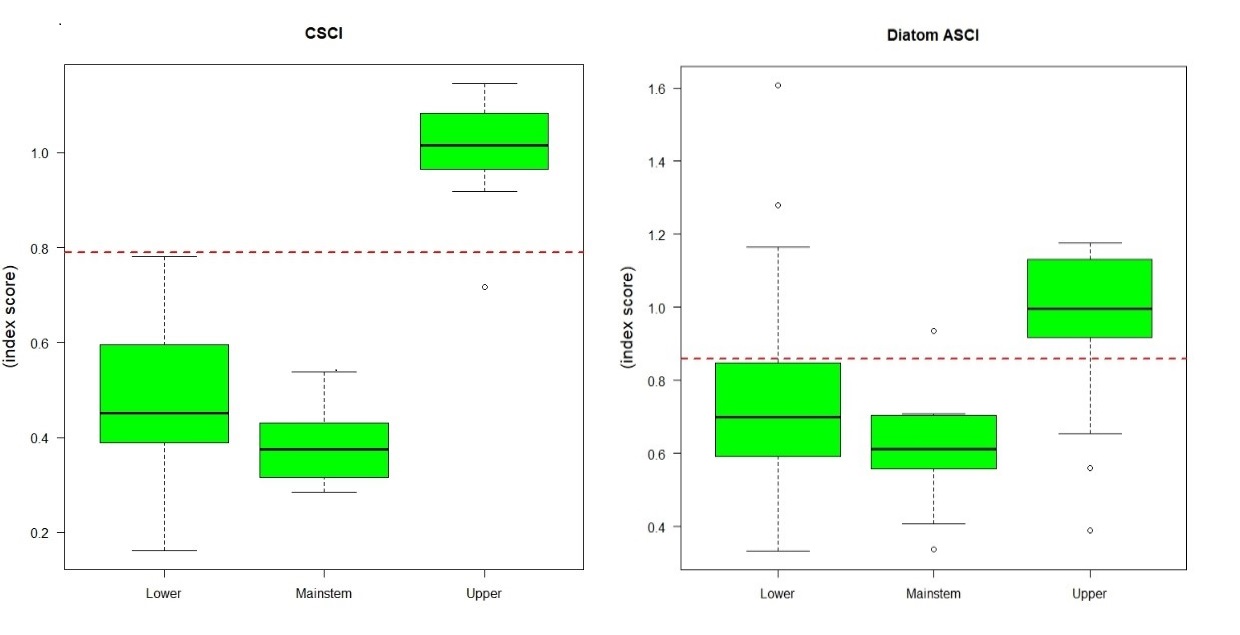Enter Password
For SGRRMP Stakeholders Only

The overall condition of streams in the San Gabriel River Watershed has been assessed by collecting benthic macroinvertebrates (BMIs) and attached algae during dry weather conditions in the spring and summer at sites throughout the upper and lower watershed since 2008. BMI communities provide an integrated view of stream water quality over time since their juvenile forms spend most of their lives living on the stream bottom or in the water column. The attached algae community includes both diatoms and soft algae whose populations change rapidly in response to changes in water quality. The biotic condition for BMI populations at each site was determined using the California Stream Condition Index (CSCI) and for attached algae the Algae Stream Condition Index (ASCI).See References on the left panel.